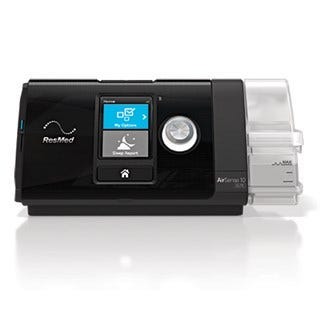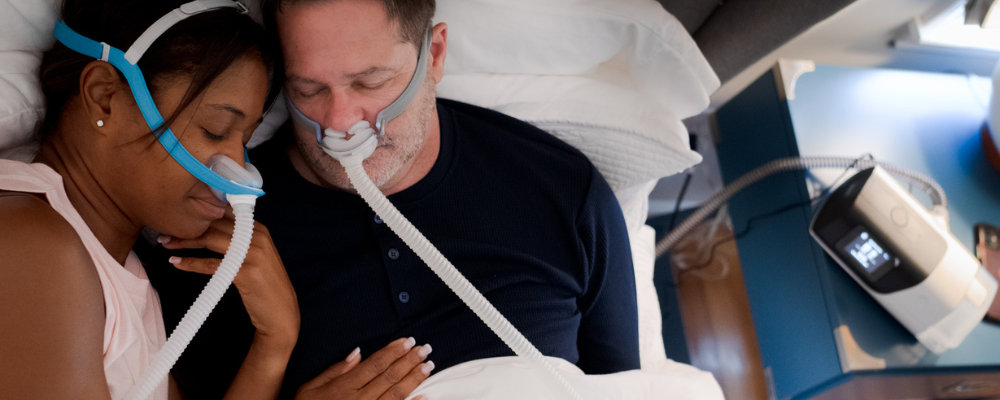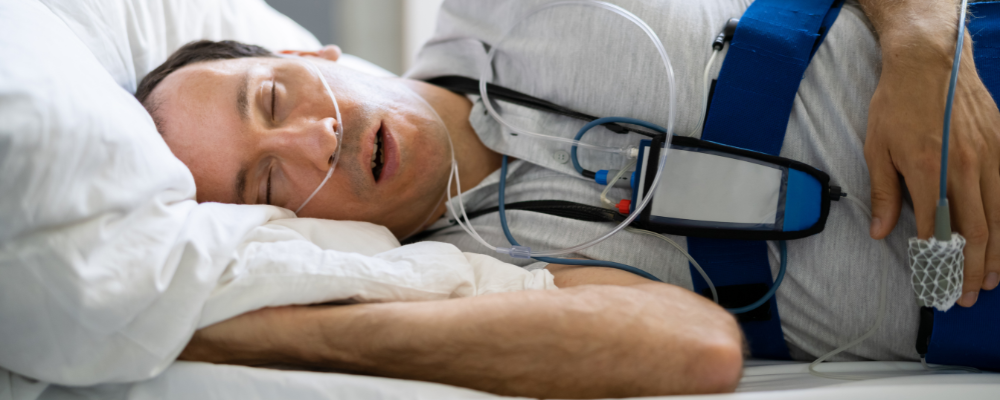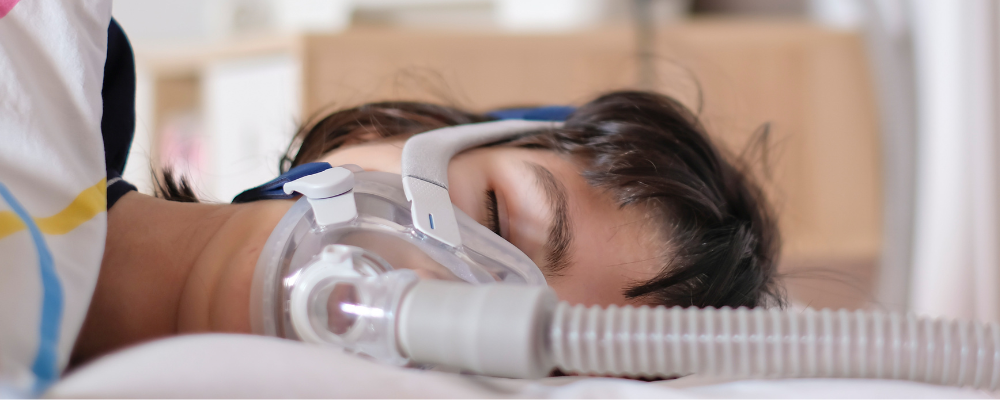Sleep apnea oxygen levels can be a source of anxiety for those who have sleep apnea (or suspect it). We’d like to help you address those concerns, so today we’ll be talking about how oxygen levels relate to the most common form of apnea - obstructive sleep apnea (OSA).
We’ll explore the two ways that sleep apnea causes low oxygen levels. We’ll also touch on what normal oxygen levels are during sleep. Finally, we’ll explain why oxygen desaturation is so detrimental to your health, and what you can do about it. Stay with us - we’re here to help!
IN THIS ARTICLE:
How Does Sleep Apnea Lower Blood Oxygen Levels?
What Are Normal Blood Oxygen Levels?
Why Is Low Blood Oxygen Dangerous?
How Do You Treat Sleep Apnea to Prevent Low Oxygen Levels?
CPAP SUPPLIES THROUGH INSURANCE:
Aeroflow Sleep is in-network with most primary insurance companies and is accreditted by Medicare and Medicaid. Complete our Qualify Through Insurance Form, and we will automatically check to see if your plan covers CPAP supplies; including a machine, mask, and accessories. ***Must have a sleep study to qualify.***
You will also receive the care and attention every sleep apnea patient deserves; one-on-one clinical support in-home or via telehealth, a dedicated Sleep Specialist you can contact during business hours, and a user-friendly online portal with tailored replacement schedule, important updates and notifications, and educational resources.
Let us take the headache out of healthcare. Join the Aeroflow Sleep family today! It only takes 5-7 minutes to get started.
Symptoms List
To get the ball rolling, it’s smart to start with a list of sleep apnea symptoms. This is especially helpful for those who suspect sleep apnea but have not been diagnosed. We hope you’ll feel better about taking actionable steps as opposed to living with suspicion! If you’re experiencing any of the following symptoms, consider talking with your doctor or healthcare team.
- Loud Snoring: Partners usually let you know about your loud snoring in no uncertain terms. If not, ask them!
- Stop Breathing: Episodes in which you stop breathing during sleep should, again, be asked by your partner if you have them. Some notice and worry. Let's address their concerns too!
- If you don't have a partner, Dr. Carleara Weiss–our Sleep Science Advisor who medically reviewed this article–recommended some apps for that; such as Fitbit Sense and SnoreLab.
- Dry Mouth: Snoring and other forms of nighttime mouth breathing often cause this when you awaken.
- Gasping for Air During Sleep: This is one of the main ways an individual learns that they are suffering from sleep apnea, by waking suddenly and gasping for air.
- Morning Headaches: This typically lasts under two hours and then dissipates. It's not a major, long-lived headache like a migraine.
- Insomnia: If you have difficulty staying asleep or your body just wakes up a lot and sleep medicine doesn't seem to make much difference, this is that.
- Excessive Daytime Sleepiness: The medical term is hypersomnia, and it feels like exhaustion that nags at you all day long.
- Difficulty Paying Attention: You're just too dang tired to focus or keep details straight in your head when this is happening while you're awake.
- Irritability: Finally, this is one is like being "hangry," or angry because you're hungry, except it's due to lack of sleep as opposted to lack of calories!
How Does Sleep Apnea Lower Blood Oxygen Levels?
There are two ways that sleep apnea lowers oxygen saturation levels: apneas and hypopneas.
An apnea is a full and total pause in breathing. You stop breathing entirely. With obstructive sleep apnea, it’s caused by an obstruction blocking the airway. In cases of central sleep apnea, it’s caused by your brain not sending the right signals to make your body breathe.
A hypopnea is an episode of shallow breathing. It can be caused by a partial obstruction that reduces air intake but does not completely stop airflow.
Both cause blood oxygen levels to dip, and repeated episodes can cause additional health problems. Sleep apneas aren’t just breathing disorders that make you exhausted. They can cause major damage to your cardiovascular system.
What Are Normal Blood Oxygen Levels?
There are a couple of ways to measure blood oxygen and sleep apnea severity:
Pulse Oximetry
You’ve likely seen a nurse use a finger clamp to measure oxygen saturation at the beginning of a medical appointment. This is called a pulse oximeter, and it is used to find out how much oxygen is attached to your blood cells by measuring how light interacts with your blood. It’s pretty cool medical science, and so easy!
During sleep, 90% oxygen saturation is considered normal. When it dips below 90%, that’s considered abnormal and called hypoxemia (low oxygen levels in the blood). When it drops below 80%, that’s deemed severely abnormal.
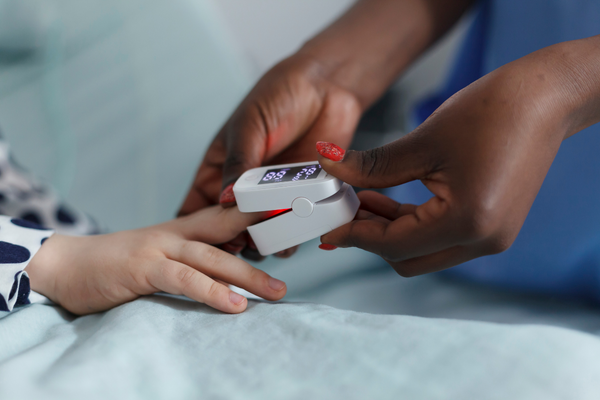

AHI: Apnea-Hypopnea Index
Your doctor may recommend or perform a polysomnography (better known as a sleep study) in a lab or offer a home sleep test to obtain your AHI score (Apnea-Hypopnea Index). This is a measure of how many times in one hour of sleep you experience apneas and hypopneas, and it determines the severity of your sleep apnea. The more severe the case, the more blood oxygen levels will be affected.
Even normal adults may have a few apneas or hypopneas during the night. The medical community agreed upon the following scale to determine apnea severity:
- Normal - Under 5
- Mild Sleep Apnea - 5-15
- Moderate Sleep Apnea - 15-30
- Severe Sleep Apnea - 30 or more
Why Is Low Blood Oxygen Dangerous?
Unfortunately, sleep apnea is like an open door to more medical conditions. The stress your body is under when it thinks it is suffocating causes your heart rate to spike. This, in turn, causes high blood pressure (hypertension). This increased pressure strains the cardiovascular system and its arterial tissues, which can lead to heart disease. Untreated apnea, especially severe OSA, increases the risk of atrial fibrillation, stroke, and heart failure.
People with existing heart problems have additional risk factors that make these conditions even more prevalent. You can see why leaving OSA or any kind of sleep apnea untreated could be dangerous. It’s well worth the effort for you and your doctor to dig a little deeper into the symptoms listed above!
How Do You Treat Sleep Apnea to Prevent Low Oxygen Levels?
This is the most important question you can ask about any kind of sleep-disordered breathing! If you are symptomatic, please start a conversation with your doctor about getting a sleep study.
If your AHI results in a diagnosis of OSA, the most common treatment is CPAP therapy. CPAP stands for continuous positive airway pressure. A CPAP machine delivers a constant stream of air into your nasal passages. This keeps the soft tissues from collapsing into the upper airway, which is the primary cause of obstructive sleep apnea.
We recognize that blowing air up your nostrils doesn’t sound very cozy for sleeping. Luckily, various CPAP machines warm and moisten the air, and there are lots of different masks and smaller nasal pillows on the market to help. If you need advice on choosing a machine, paying with insurance, or finding accessories to make your treatment more comfortable, Aeroflow Sleep has your back!
References
Blaisdell CJ;Goodman S;Clark K;Casella JF;Loughlin GM; “Pulse Oximetry Is a Poor Predictor of Hypoxemia in Stable Children with Sickle Cell Disease.” Archives of Pediatrics & Adolescent Medicine, U.S. National Library of Medicine, https://pubmed.ncbi.nlm.nih.gov/10980793/
Staff, Mayo Clinic. “More Causes and Symptoms of Sleep Apnea.” Mayo Clinic, 21 Nov. 2020, https://www.mayoclinic.org/diseases-conditions/sleep-apnea/symptoms-causes/syc-20377631



